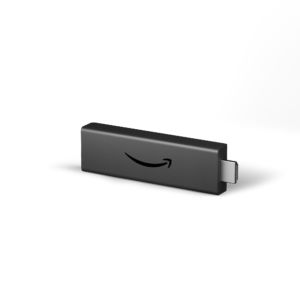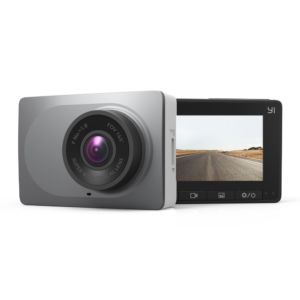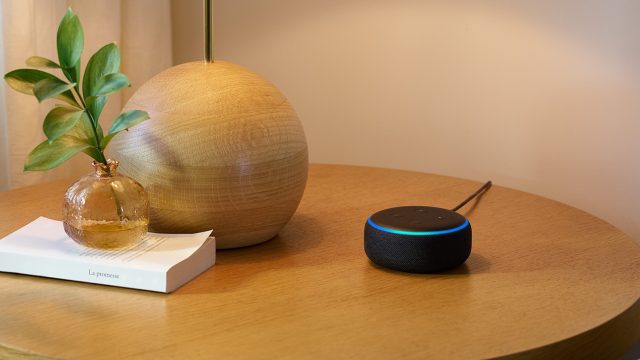
Finding a gift for your most tech-savvy friends and family can be tough, especially with electronics getting more expensive as the years go by. While it may seem like the only electronics worth getting are those that exist outside of your budget, that's not actually the case. Plenty of tech gifts are available at affordable prices—the struggle is sorting through the junk to find the devices worth shelling out any amount of money for.
This is where we at Ars come in: we spend all year testing electronics, with prices spanning everything from "luxury" to "dirt-cheap." So recently, we poured through our notes to find some of the best tech gifts you can buy that are under $50. All of the devices listed below have been tested and verified for excellence or for personal use on a regular basis. Instead of shooting in the dark or overspending when it comes to tech gifts this year, consider the following devices that we know will make any recipient happy.
Note: Ars Technica may earn compensation for sales from links on this post through affiliate programs.
Anker PowerLine II Lightning and USB-C cables for $12.99 (and up)

There are many chargers and portable batteries that can do the job here—for smartphones, just make sure you get at least 18W of power—but for cables, we've found Anker's PowerLine II series to be particularly reliable. Its USB-C to Lightning cable is MFi certified by Apple to work safely with iOS devices and costs significantly less than Apple's own alternative. Its USB-C to USB-C 3.1 Gen 2 cable supports up to 5-amp/100W charging and up to 10Gbps data transfer speeds, so it can charge newer USB-C laptops like the 15-inch MacBook Pro as fast as possible (again, with a powerful-enough charger) and move videos and other large files quickly. The more affordable USB-C to USB-C 2.0 cable, meanwhile, supports up to 60W charging, which is easily fast enough to refill new USB-C phones and tablets at max speeds. Both USB-C cables are certified as compliant by the USB-IF, a nonprofit body run by Apple, Microsoft, Intel, and other major tech firms that looks over the USB spec.
In any case, each PowerLine II cable we've tested has performed as it should and shown no serious signs of wear after months of travel and regular use. If something does go wrong, Anker gives each cable a lifetime warranty. It's not the sexiest gift, sure, but bundling a few cables together based on what devices your loved one owns could make their day-to-day a little more convenient.

Anker PowerLine II USB-C to Lightning Cable (6ft)
Anker PowerWave Stand for $15.99

Wireless chargers are really handy to have on a nightstand or an office desk, and Anker's PowerWave 10W Qi wireless charging stand is a solid one at a great price of $15.99. It has a simple yet practical design that lets you use your smartphone in an upright position while it's charging, and it can be positioned horizontally or vertically on the stand. It also supports phone cases up to 5mm thick, so most will not have to remove their phone cases to charge up.
Anker's stand supports 10W charging on Galaxy smartphones and others, and up to 5W charging on iPhones. While it's not the fastest fast charger we've ever tested, Anker's stand will power most smartphones at least 30 percent in just one hour. The stand itself doesn't get hot while charging either, nor does it raise the temperature of your smartphone too much. Overall, it's a solid wireless charger for most Qi-enabled smartphones at an excellent price.

Anker PowerWave Stand
Fiio µBTR for $22.99

The µBTR itself is conveniently designed, with a built-in clip that can attach to a pocket and dedicated buttons for volume, pause/play, and activating Siri or Google Assistant (depending on your phone OS). It lasts about eight or nine hours on a charge, which should be enough for a typical workday, and it recharges quickly through a USB-C port. It pairs simply enough and has presented us with no significant connection issues in testing.
Going from a wired connection to Bluetooth almost inherently means a drop in audio quality, but for what it is, the µBTR doesn't degrade things too much. It doesn't support the higher-quality aptX or LDAC audio codecs, but it does support AAC, which is as good as iPhone audio gets. Switching to a Bluetooth headset is still the simplest solution for most people moving to a phone without a headphone jack, but if you know someone who is deeply into audio and has invested a good amount in a decent pair, the µBTR is a nifty compromise.

Fiio µBTR
SanDisk MicroSD Card for Nintendo Switch (128GB) for $25.49

There are higher-rated cards with noticeably faster speeds, but not every device will actually take advantage of that power (the Switch, for one), and the prices are still too high for all but the heaviest video recording needs. Similarly, while cheaper cards might offer a better price-to-capacity ratio, many of them aren't as future-proof and can be prone to counterfeits online.
The Switch card is more or less a rebranded version of SanDisk's Extreme microSD card: it's a U3, V30-rated card whose sequential and random read/write speeds are fast enough to record 4K video and operate Switch games comfortably; we've tested it for several months without any issues; and at $20-25 for a healthy 128GB of space, its price is modest. Since it's regularly sold directly from retailers like Amazon and Best Buy, you can buy it without fear of receiving a fake. Plus, it's got that cute Toad mushroom on it. Again, there are many other cards that perform similarly—the SanDisk Extreme Plus and Samsung Evo Plus are two good examples if you see them going for significantly less—but if you don't want to dig into the weeds, we can confirm that SanDisk's Switch card is a safe and speedy way to feed a storage-starved device.

SanDisk MicroSD Card for Nintendo Switch (128GB)
How Things Work: The Inner Life of Everyday Machines by Theodore Gray for $26.99

We take a lot of technology for granted—things like clocks, locks, and scales have become so commonplace that they don't warrant a second glance to most of us. Writer Theodore Gray dives into the world of ordinary things in How Things Work: The Inner Life of Everyday Machines, a stunning coffee-table book with detailed photos by photographer Nick Mann. Gray explores how everyday things work in great detail, going so far as to build some of them himself, and provides a new perspective on these objects that most of us would never have unless we knew them intimately (I don't know about you, but I don't know my alarm clock intimately at all). What Gray did in his previous books about elements, molecules, and reactions, he has now done for the mechanical systems that run our world, and the result is a beautiful appreciation for systems we all often overlook.

How Things Work
LEGO Architecture Sets for $30 to $50

LEGO sets are fantastic gifts no matter who your recipient is, how old they are, or what their interests may be. While many go gaga for Star Wars or Harry Potter sets—many of which cost hundreds—the modern Architecture line has a number of sets priced $50 and under that make great gifts. The series focuses on landmarks from around the world, making it perfect for those who proudly live in, or who have a soft spot for, cities like New York, London, Las Vegas, Paris, and San Francisco. Thanks to the superb level of detail in each set, you may find yourself seeing the city you love in a new light while building it from scratch.

LEGO Architecture
Final E2000 for $39

The E2000 is a no-frills in-ear headphone: there's no microphone, no noise-cancellation, and, unfortunately, no in-line volume controls. The focus is entirely on comfort and sound quality; thankfully, the E2000 hits both out of the park. The cable could stand to be a touch thicker, but the aluminum earpieces are small and super lightweight, so they should be easy to wear for hours at a time. The snug fit does well to naturally block out external noises, too.
Audio quality, meanwhile, is superb: these aren't "professional" headphones by any means, but for $39, their clean and clear sound is better than many earphones that cost twice as much. (They even surpass something like Apple's AirPods Pro, which admittedly has many more features but still costs $250.) They have a slightly V-shaped signature that gives mild boosts to the bass and treble but remains smooth across genres. The E2000 provides a genuinely surprising amount of width and depth, giving tracks a "3D" feel that's atypical for inexpensive earphones. In all, it's a sound that should be pleasant to most tastes.
All that said, we realize that many people care more about how easy a headphone is to use than how good it sounds. If you can only gift a pair of Bluetooth earphones on the cheap, consider Anker's Soundcore Spirit X. They aren't nearly as balanced sounding, but their bass-heavy profile is fun enough, and their IP68-rated design can withstand daily trips to the gym. They aren't truly wireless—we've yet to find a pair of AirPods-style earbuds under $50 we can comfortably recommend—but they do get around 15 hours of battery life on a charge and won't force you to carry a dongle around. Still, if you know someone who still thinks the point of headphones is to sound good, the E2000 are a somewhat hidden gem.

Final E2000
Oral-B White Pro 1000 for $39.94

Electric toothbrushes are electronics that you don't think about often but that get used on a daily basis. Oral-B's White Pro 1000 isn't the fanciest or the most feature-rich electric toothbrush out there (no, it doesn't connect to an app), but it does a much better job of cleaning your teeth than a regular toothbrush does. The built-in timer in the handle pulses every 30 seconds, letting you know when you should move to a different portion of your mouth. It also keeps track of how long you brush, helping you brush at least two minutes each time you use it.
The White Pro 1000 gets about 22 hours of battery life before you need to recharge it using the included charging stand. That means it will last at least one month on a single charge, and it'll charge fully after an overnight stay on the stand. It's also compatible with seven different Oral-B brush heads, so you can change it up when you feel like your teeth need a different type of clean. The $39 Oral-B White Pro 1000 is a great option for anyone who doesn't want to spend close to $100 or more on a solid electric toothbrush.

Oral-B White Pro 1000
Audible membership (3-month) for $45

I get my reading/listening material from a myriad of sources, but the convenience of Audible for audiobooks is unmatched. The Amazon-owned company not only has a huge selection of audiobooks to choose from, but it also has exclusive Audible-only recordings that are a delight, like Thandie Newton's reading of Jane Eyre and Stephen Fry's narration of the complete adventures of Sherlock Holmes.
Audible's membership lets you pick one book each month, plus two Audible originals for free, and it gives you access to daily deals and members-only sales. Giving a 3-month Audible membership as a gift is a win-win situation because, even if your recipient decides to cancel, they get to keep all the books they purchased while they were a member.
I never thought audiobooks were for me until I gave Audible a shot. I still read physical books, but my busy schedule lets me read even when I don't have the time to sit down and pull out a paperback. Any book lover in your life will appreciate how much more they can read on a regular basis with an Audible membership. Plus, new members can sign up for a three-month subscription for just $6.95 per month for a limited time.

Audible gift subscription (3-month)
Amazon Fire TV Stick 4K for $49.99

Of the two, though, we give a very slight nod to the Fire TV Stick 4K. Whereas the Streaming Stick+ only supports the basic HDR10 format, Amazon's streamer works with HDR10, Dolby Vision, HDR10+, and HLG. This will only matter if your loved one has a TV that supports those standards in the first place—and HDR content in general still isn't the norm—but it gives the Fire TV Stick 4K a greater measure of future-proofing. While its Alexa-aided voice search isn't perfect, Amazon's streamer is also generally more sophisticated and speedier with voice commands than the Streaming Stick+. Having Alexa onboard lets the Fire TV Stick 4K pair with several other smart devices that support the assistant as well.
We found the Fire TV Stick 4K to be smarter about suspending apps at the point you last used them instead of resetting them whenever you return to the home menu. The Fire's ability to display those menus in HDR is a nice touch that makes those menus look consistently colorful on HDR-ready TVs. The recent additions of YouTube TV and Disney+ filled two huge holes in Amazon's otherwise robust app library. If your loved one likes watching game streamers on Twitch, the Fire TV Stick 4K has an official app for that, whereas all Roku streamers do not.
The biggest drawback to the Fire TV Stick 4K—outside of not wanting to contribute to Amazon's ever-widening empire—is that its interface is a bit of a mess. There are ads all over the place, it's not uncommon to find multiple shortcuts to the same app onscreen at the same time, and Amazon still tends to push its own Prime Video shows and services above other content. Ignoring all this is easy enough, and the interface is much flashier-looking than Roku's dated UI, but the Streaming Stick+ is altogether easier to navigate. Still, unless your recipient is a stickler for software design or just wants nothing to do with Alexa, the Fire TV Stick 4K should make cutting the cord more pleasant.

Amazon Fire TV Stick 4K
Yi Dash cam for $49.99

Dash cams are great gifts in general because most people don't think to buy one for themselves until they realize how useful a dash cam would have been in a bad situation. The Yi Dash Cam is one of our favorites because it's just $50 and has all the features most people would need. It has a 165-degree field-of-view and records 1080p video at 60fps, and it's G-sensor will automatically save footage that occurred at a time of impact.
You can view footage and change settings using the buttons on the dash cam itself, or you can use the Yi Dash Cam app. The latter is one of the better dash cam mobile apps out there because it's easy to use and lets you view and download video clips fairly easily. You can even share footage over social media from directly in the app. High-quality video recording, easy access to footage, and a reliable G-sensor are three of the most important features every dash cam should have—and the Yi Dash Cam combines all of them in a compact, affordable device.

Yi Dash Cam
Echo Dot for $49.99

Amazon's smallest smart speaker is a gift that does a lot more than just answer your questions. The Echo Dot is a home for Amazon's virtual assistant Alexa, but it's also a Bluetooth speaker that will suit small spaces like dorm rooms just fine. It's not the best Bluetooth speaker you can get in terms of sound quality, but the Echo Dot's combination of features is what makes it a great device. In addition to playing music and using Alexa to answer your questions, it can also control smart home devices using your voice commands, call others with Echo devices, set timers and reminders, and use Alexa Skills to do things like read the news, play ambient sounds, and more.
The convenience of a device like the Echo Dot comes from connecting it to your various accounts like Spotify, Apple Music, Philips Hue, and more. Once paired, you can play specific playlists you've created just by asking for them, add items to your shopping list, and trigger a "going to bed" routine with just one command. Alexa can connect to most major services now, but if you're embedded in Google's systems, we recommend getting a Google Home Mini instead. It does almost everything an Echo Dot can do and will be easier to set up with your various Google accounts and services.

Echo Dot
https://arstechnica.com/staff/2019/11/best-tech-gifts-under-50/
2019-11-13 12:30:00Z
CBMiP2h0dHBzOi8vYXJzdGVjaG5pY2EuY29tL3N0YWZmLzIwMTkvMTEvYmVzdC10ZWNoLWdpZnRzLXVuZGVyLTUwL9IBRWh0dHBzOi8vYXJzdGVjaG5pY2EuY29tL3N0YWZmLzIwMTkvMTEvYmVzdC10ZWNoLWdpZnRzLXVuZGVyLTUwLz9hbXA9MQ










 But Instagram’s challenge will be retraining its populace to make premeditated, storyboarded social entertainment instead of just spontaneous, autobiographical social media like with Stories and feed posts.
But Instagram’s challenge will be retraining its populace to make premeditated, storyboarded social entertainment instead of just spontaneous, autobiographical social media like with Stories and feed posts.



